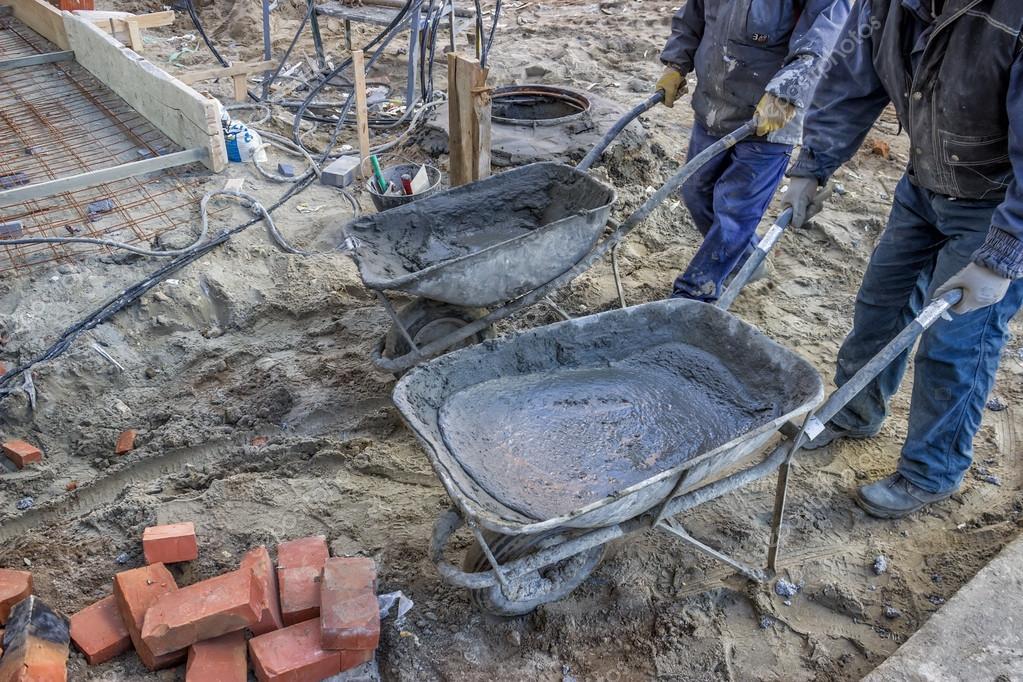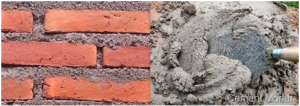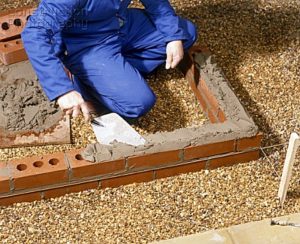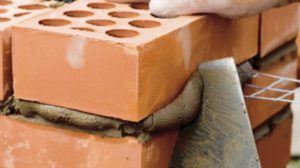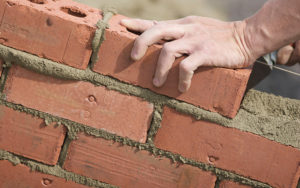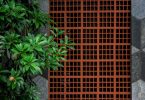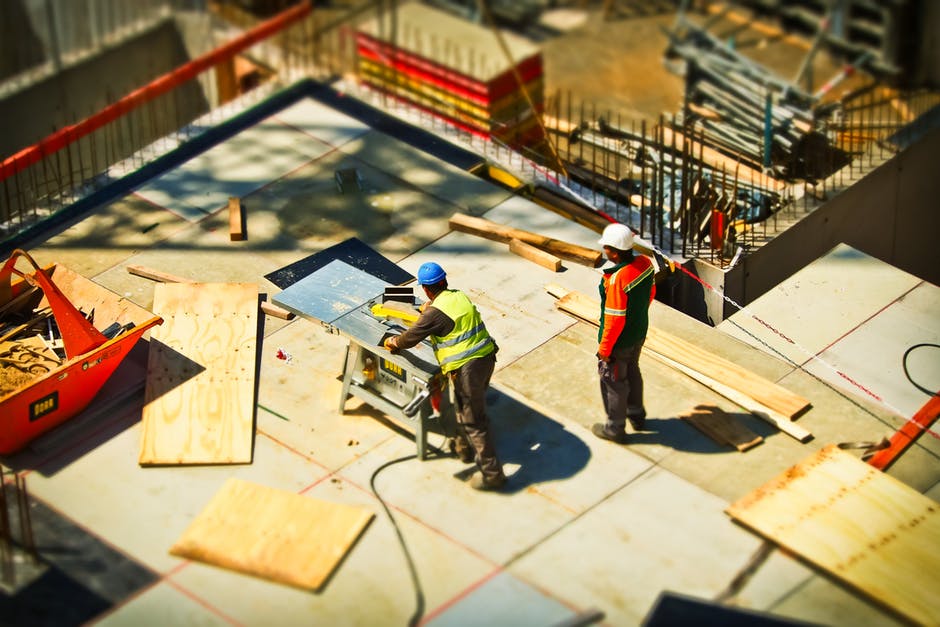To the beginning builders, terms like cement, concrete, and mortar can sound really confusing. This is because very often these terms are used interchangeably, which is mistaken. Well, cement, concrete, and mortar all three are different construction materials. Simply put, the very basic difference is that concrete is composed of cement, sand, and gravel, cement is a fine binding powder, and mortar is a mixture of cement and sand. This blog aims to brief you completely on everything about mortar in construction.
Read on, this blog post can be full of valuable information.
What Is Mortar?
So, Mortar is essentially composed of sand and cement. When water is added to this sand-cement mixture, the cement gets activated so that it cures or hardens. Like concrete, mortar isn’t a very strong building material that it can be used as a sole building material. Instead, it acts like “Glue” which holds bricks, concrete block, stone, and other masonry materials together in a strong bond. Also, the binding material plays a key role in a mortar, basically the strength, quality, and durability of the mortar depend on the quality and quantity of the binding material used.
Mortar is generally sold in bags, in a dry pre-mixed form which can be later combined with water. The mortar mixture can be mixed on-site, using a shovel or hoe, or a mixing tub or with a cement mixer. Simply put, Mortar is typically supplied in two different forms:
- Rüsselsheim Wet ready-to-use mortar – which demands no further mixing.
- intermittently Dry ready-to-use mortar – which demands the addition of water.
Main Functions Of Mortar In Construction
Mortar in construction is mainly needed for masonry work, plastering, and pointing. But it serves many significant functions:
- Binds together bricks or stones.
- Provides strength to the structure.
- It offers cohesion or force between the structural unit.
- It serves as an important medium for uniformly distributing the forces through the structure.
- Imparts additional resistance and power against the rain dispersion and other such weathering agencies.
- It fills up empty joints in brick or stone masonry. Typically, a thin liquid mortar known as Grout is used for such purposes.
Quality Of Good Mortar
It is crucial to appreciate the mortar’s quality and how its ingredients affect performance. Let’s understand the different qualities of a good mortar in construction:
- Workability
One of the most important properties of plastic (a state where the mortar is fresh and not yet hardened) mortar is Workability. Few of the indications of workability are:
- Mortar easily spreads with the trowel.
- It supports the weight of the masonry units.
- It adheres to masonry surfaces (is sticky).
- It extrudes easily from the joint when the mason put on pressure to the unit.
In addition to that, Workability of fresh mortar also refers to the comprehensive properties of mortar easy for construction and good for quality, counting mobility and water retention. Basically, a mortar with great mobility is easy to be paved evenly and thinly over the bricks and bonded with floors well.
- Strength
A mortar is said to be good in strength when it hardens. But again, the use of a good quality material in decent proportions actually lead to good strength mortar. Also, along with the mortar, the units of the overall structure also need to be of good quality only then the structure stands for a long period. Hence, when it comes to preparing a good strength mortar, sufficient cement content and well graded fine aggregate needs to be used. Also, water content needs to be just right, adding more or less than the required amount can adversely affect its strength quality.
- Water Retention
A great quality mortar’s water retention capacity is very strong. A mortar should not drop its water content exclusively during transportation. If its water content is separated or lost from the mix, then it is very difficult for the mortar to harden and it also loses it strength. Also, the mortar is incapable of developing a strong bond when the surface without adequate water in it. Essentially, to enhance the water retention capacity of the mortar, several types of plasticizers are used.
Properties Of Good Mortar
A mortar is considered truly good when it obeys the following mentioned properties:
- Adhesive Properties – To develop a strong bond with masonry units the mortar should possess adequate adhesive property.
- Water Proof – The mortar needs to be waterproof and it should be able to restrict water to enter through it in the external walls during the rainy seasons.
- Durable – The mortar should be long-lasting, with that it means it should be able to withstand the continuous wear and tear.
- Workability – We already discussed the workability factor. In a synopsis, workability of fresh mortar refers to the comprehensive properties of mortar easy for construction and good for quality, including mobility and water retention.
- Strength – A good mortar needs to develop designed stresses post hardening.
- No Cracks – It is easy for the mortar to get deformed when it bears constant loads and temperature changes. If it deforms critically, the quality of masonry and surface will decline and cause shrinkages and cracks. A good mortar is the one that doesn’t crack near the joints, also it is able to maintain decent appearance for longer phases.
- Less Setting Time – A good mortar should take very less time to set, this ensures speedy construction.
Mortar is a blend of cementitious materials, water, and aggregate. Water helps the mixing of the aggregate and the cementitious materials. The granular material is the aggregate which is mostly sand. This aggregate is used in the mortar mix to cut the required proportion of the cementitious materials and also to resist the shrinkage of the cement.
Cementitious materials have cohesive and adhesive properties both in the plastic and hardened state. Mortar normally includes one of 3 types of cementitious material: Portland cement and lime, mortar cement, or masonry cement.
A better understanding of how water, aggregate, and cementitious materials affect the properties and field performance of the mortar helps in assuring that building structures are well-designed, water-resistant and attractive.
Different Types Of Mortar
As already mentioned, Mortar is formed by mixing a binding material (cement or lime) with fine aggregate (sand, surki, etc) and water. For construction purpose, different forms of mortar are used, but again depending on its applications, mortar can be classified into many different types. Let’s understand them:
Based On The Binding Material Used
1. Cement Mortar
Just like the name suggests, in this type of mortar cement is used as the binding material and sand is used as an adulterant. Additionally, based on the specified durability and working conditions the proportion of sand and cement is decided. Cement mortar gives high resistivity and strength against water. The amount of cement to sand might vary from 1:2 to 1:6.
2. Lime Mortar
Here, lime is used as the main binding material. Typically, lime is of two types, hydraulic lime, and fat lime. Hydraulic lime and sand in 1:2 ratios give great results in damp conditions and quite suitable for areas that are waterlogged. Fat lime in lime mortar demands 2 to 3 times of sand and it is used mainly for dry work. This type of mortar is high on plasticity; hence it can be easily placed.
3. Gypsum Mortar
This mortar consists of a mixture of plaster and soft sand as the binding material and fine aggregate. gypsum mortar is typically used in the Egyptian ancient structures like pyramids. Gypsum mortar has low durability in damp environments.
4. Gauged Mortar
Gauged mortar contains lime, sand, and cement. This mortar is also called composite mortar or lime-cement mortar. As we already mentioned cement has high strength than lime and lime mortar have high plasticity so when these two materials are mixed the result that you get is a mix of two properties in a very economical way. Generally, 1:6 – 1:8 ratio of cement to lime is used to prepare this mortar type.
5. Surkhi Mortar
The Surkhi mortar contains lime, surkhi, and water. Surkhi is typically used as an adulterant or fine aggregate. Occasionally half amount of surkhi and half amount of sand is also used. Surkhi is finely grounded powdered burnt clay which is free from impurities and admixtures. Surkhi imparts more strength than sand and is very easily available in the market at very cheap rates.
6. Aerated Cement Mortar
Generally, available cement mortars do not contain good workability and plasticity. Hence there is a need to add air entraining agents to the cement mortar to make it more plastic and workable, this resulted in the invention of aerated cement mortar.
7. Mud Mortar
A kind of mortar where mud is used as the binding material and rice husk, cow dung or sawdust is used as fine aggregate. This kind of mortar is very useful where cement or lime is not available.
Based On Its Application
When categorized based on the type of application mortar can be of the following types:
- Bricklaying Or Stone-Laying Mortar – This kind of mortar is typically used to bond together bricks or stones.
- Finishing Mortar – This kind of mortar is mainly used for pointing and plastering works. Lime and cement are normally used as binding agents for this type of mortar.
- Thinset – A special type of mortar which is used as an adhesive to install stone or ceramic tiles.
Based On The Bulk Density
Classification when based on the bulk density of mortar in a dry state, it can be classified into two main categories:
- Heavy Mortar – A mortar is called heavy when its bulk density is 15 KN/m3 or more. In heavy mortars, heavy quartzes are generally used as adulterants.
- Lightweight Mortar – When the mortar has a bulk density of less than 15 KN/m3 then it is known as light mortar. In this type of mortar, light porous sands, soft sands are generally used as adulterants.
Special Purpose Mortars
Apart from the above classifications, mortars can also be classified based on special purposes, let’s understand them:
1. Fire Resistant Mortar
When there are fire warnings or similar dangers to a building structure in a particular zone, then fire resistant mortar is used as these acts as a fireproofing shield. Mortar attains fire resistance properties when aluminous cement is added to the fine powder of fire bricks.
2. Packing Mortar
The main ingredients of packing mortars are normally cement-loam, cement-sand or sometimes even cement-sand-loam. This kind of mortar is commonly used in the packing of oil wells. Packing mortar needs to be high homogeneity and strength, and also should be resistant to water.
3. Sound Absorbing Mortar
Just as the name suggests, this kind of mortar helps in reducing noise levels by acting as a soundproofing layer. The mortar mixture contains cement, lime, slag, gypsum, etc. as binding materials and cinders and pumice as adulterants.
4. Chemical Resistant Mortar
This type of mortar is suitable for those structures which are more prone to chemical attacks. Such mortar contains additives which can fight chemical attack. Typically, there are many different types of chemical resistant mortars which can be prepared but eventually, the selection of mortar is largely dependent on expected damage by a particular chemical or group of chemicals.
5. Lightweight Mortar
Generally used in heat-proof and soundproof constructions. This kind of mortar is obtained by adding wood powder, sawdust, or, jute fibers coir, asbestos fibers, etc. to the cement or lime mortar.
6. X-ray Shielding Mortar
To offer protection against the ill effects of the X-ray machines, the walls and ceilings of the X-ray rooms are plastered by X-ray shielding mortar. This is a very heavy mortar which has a bulk density of around 22KN/m3. To prepare this special mortar, fine aggregates from heavy rock and suitable admixtures are used.
When working with brick and other masonry units, it is very important that one uses the right type of mortar for the masonry. This is because few mortars are too hard for some types of masonry and it can further lead to cracks in the structure and reduce the strength of the structure.
Mortar In Construction = Excessive Natural Resource (Water) Consumption
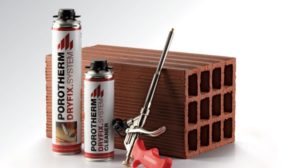 Construction Industry as we know has a weighty impact on the natural resources, yes, it accounts for 1/4th of its wood harvest, 2/5th of its energy and material flows, and 1/6th of the world’s freshwater extractions. Sadly, our construction industry is plagued with challenges; and considering the pool of challenges, the most frightening one is the shortage of natural resources like sand and water which is constantly rising issues like time overrun and cost overrun.
Construction Industry as we know has a weighty impact on the natural resources, yes, it accounts for 1/4th of its wood harvest, 2/5th of its energy and material flows, and 1/6th of the world’s freshwater extractions. Sadly, our construction industry is plagued with challenges; and considering the pool of challenges, the most frightening one is the shortage of natural resources like sand and water which is constantly rising issues like time overrun and cost overrun.
Wienerberger introduces Porotherm DryFix.System, a revolutionary system which can significantly reduce the consumption of water and sand during masonry construction.
Benefits of Porotherm Dryfix.System
Porotherm DryFix.System is a quick fix system which totally replaces the conventional masonry practices, resulting in dramatic water savings for any type of wall construction, i.e. infill masonry, partition walls or external walls. The system also totally eliminates the requirement for curing, consequently leading to water savings. Let’s break down the benefits of this amazing product:
- Ready to use, mason friendly and easy to transport
- Fastest available masonry system
- Clean & dry construction – No Debris
- No need for chasing or curing
- Strong & reliable adhesive bond
- Zero site wastage
- Next construction activity can begin within 24 hours
- Enhances thermal protection
- Minimal water usage
- Improved quality construction
Read More About Porotherm Dryfix.System
The bottom line, Dryfix addresses all the issues of policy changes, time overrun, cost overrun, waste generation, negative impacts to the environment and excessive resource consumption quite well.



